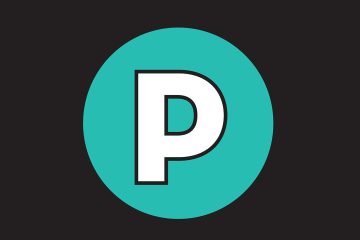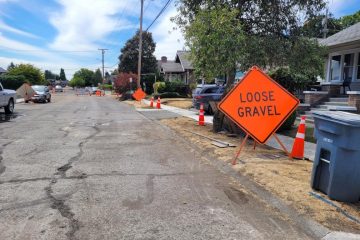We always recommend you review the full 2023-2024 Budget for specific details about funding, staffing and the projects that will happen because of this budget. This Budget in Brief gives you a quick overview of Sumner’s numbers and key strategies.
Budget Process

Budget Principles
- Our budget cycle runs January 1, 2023, through December 31, 2024.
- We must balance our budget. For large capital projects, we save revenue over many years, crossing multiple budgets. In this budget, it initially looks like expenses are higher than revenue because we’re using balances saved from previous years to complete large capital projects.
- We use ongoing revenues to pay for ongoing expenses, and use one-time revenue to pay for one-time projects.
- Salaries and benefits remain our largest expense, meaning employees are the city’s most valuable asset.
- Each year, State and Federal regulations require more of cities with no additional funding, putting constant ongoing pressure on City budgets.
- The City’s budget is broken into General Fund, Special Revenue Funds, Enterprise Funds, etc. Each fund operates as an independent business. We cannot simply move funds from one to another. We routinely do studies to ensure funds like the utilities are healthy with revenues covering expenses while keeping rates as low as possible. These technical fund names make it difficult for most people to understand, so this document breaks out spending based on more identifiable functions such as public safety, utilities and streets.
Strategic Priorities

Staffing by Function
Full-time equivalent city employees
Many staff fill multiple functions. For example, one Public Works Operator can work on a water main in the morning and a pothole repair in the afternoon. These breakdowns are estimations of how our time is spent.

2023-2024 FUNDING COMING IN
Projected Revenues
Taxes are the source of revenue most people think about, but they are not the only source. The City earned far more grant funding in 2023-2024 than in previous years. Charges for Service include permit fees.

Revenues by Year & Category

Sales Tax Revenues
State of Washington sales tax is based on the destination in which a customer takes possession of the item. The graph starts at $6 million to better illustrate changes year over year. Sales Tax remains the most volatile source of income as it can fluctuate with the economy, so we budget conservatively.

More About Taxes
Taxes are not the City’s only source of revenue and the City is also not the only recipient of your tax dollars. See where your property tax and sales tax bills go.

Current Economic Climate

2023-2024 FUNDING GOING OUT
Budget by Expenditure Type

We have relatively low debt service for cities our size. This biennium, most funding is going to capital investments, which are one-time infrastructure expenses and operating costs, which are day-to-day activities.
Real World Examples
- Utilities takes a lot of both capital infrastructure (like the streets torn up downtown for new water lines) and day-to-day staffing. Operating increased as issues like water rights have been taking time in the Legal department.
- What’s a capital cost for Community Development? It’s parks & facilities! Upgrades like adding the Portland Loo restrooms add capital costs.
- Capital costs are not just construction. Public Safety has a small capital budget for fleet, keeping police vehicles in top working order.
- General government has no capital costs but takes a large portion of operating. Why? This portion includes a variety of primarily staff positions focusing on things like Legal staff responding to public records requests, Information Technology staff training to avoid a cybersecurity breach, Finance tracking the budget, and Communications informing you about it.
Operating Budget by Function
Total $78 Million
The Operating Budget includes the funding for day-to-day costs of delivering city services. As with most things, costs have increased for the city’s daily needs, from the price of gas to the cost to bring a crew in on overtime to repair a broken water main over the weekend.

Capital Budget by Function
Total: $89.5 million
The Capital Budget focuses on building infrastructure that will last for years to come. Because these are one-time costs for large projects, we did not show a year-to-year comparison.

How We Are Making Lives Better:
COMMUNITY CHARACTER
- Replace playground at Rainier View Park & redesign Heritage Park.
- Paint the Sumner Senior Center
- Celebrate a broader range of cultures in arts and events.
- Rehabilitate Ryan House for broader, consistent use.
- Secure funding for Seibenthaler Park & Bennett property development.
PUBLIC SAFETY
- Grow community court to provide alternative resources to criminal defendants struggling with
- underlying addiction or mental health disorders.
- Add position for Emergency Manager/Safety Coordinator.
- Build new Operations Facility to respond to broken water mains, filling potholes or plowing snow.
- Partner with Co-operative Cities to provide specialized police services.
EXCELLENT GOVERNMENT
- Improve explanation for when/why projects need a permit & offer a fee calculator.
- Update the Comprehensive Plan.
- Focus on employee cross-training to add staffing depth to department.
- Review and update the non-represented Salary Study.
- Configure and implement new mobile device management solution.
PROTECTION OF NATURAL RESOURCES
- Build Habitat project of White River Restoration project to provide flood protection & wildlife habitat.
- Offer green burial options at Sumner Cemetery.
- Update the Parks, Trails & Open Space plan.
- Replace back-up generators that keep the treatment plant working in power outages.
- Complete design and advance permitting for a fish passage culverts along Salmon Creek.
EFFECTIVE TRANSPORTATION
- Complete the construction of the Academy Street Bike Lane Project.
- Relaunch public/private sidewalk program.
- Finish Town Center: Main & Wood intersection construction.
- Continue replacing plastic pavement markings every 7 years, restriping lane lines annually, patching potholes as needed, and chip sealing roadways every 15 years.

